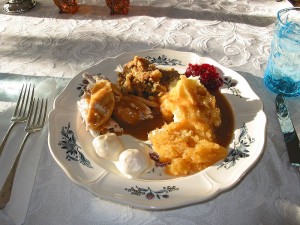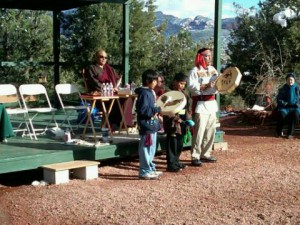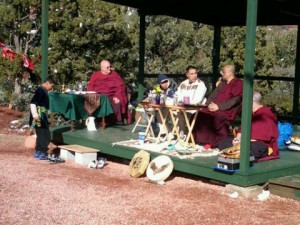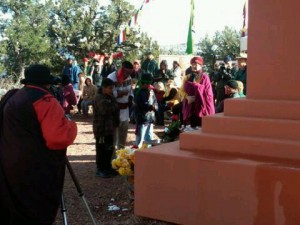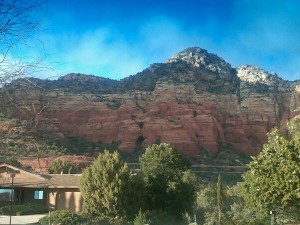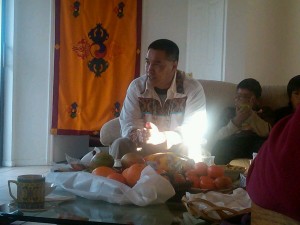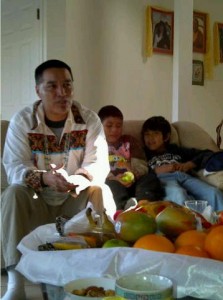The following is an excerpt from a teaching by Jetsunma Ahkon Lhamo offered during a Phowa retreat:
Having given rise to these ideas and begun to think about the other realms in the six realms of cyclic existence, let’s talk about death.
Now, first of all, there are a couple of points that I want to bring out, and these points could not be brought out better than the way they are brought out in a particular book. For any of you who are interested, this is an excellent book to read. It’s called Death and the Art of Dying in Tibetan Buddhism, by Bokar Rinpoche. The reason why I especially like this is that it is actually not taken from any one text. It is taken from a grouping of teachings that this lama gives in a very conversational way; and like I’ve told you, I think that Westerners really understand conversational teachings better. That’s my perception anyway. I do feel that that happens. He gives these teachings in a very conversational way, and he gives them often in question and answer form; and that seems to be very useful for students The way that he gives these teachings is very approachable and very clear,. So I would like to use a little bit of the way that he approaches some ideas, so that you can get them a little bit better.
We have talked about the six realms of cyclic existence. Now we are going to be talking about the six bardos. You should understand, first of all, what bardo isWe start with the bardo of living. The bardo of living starts at the time of birth and ends with the time of death, or just before the time of death. We think of that as the bardo of living. So the way that our minds think, we think, “Let’s see, October twelfth, nineteen forty-nine, that’s when my bardo of living started. And when is it going to end? We don’t know that yet. So I have a date here, and someday we’ll have a date here.” You see? And that’s what we think. We think bardo goes from October twelfth, nineteen forty-nine, to whenever that is.
Now another lama would laugh with me as to how silly it is to think that way. Since we as sentient beings don’t have that kind of teaching, we don’t know how funny that is; but that’s pretty funny because it’s a very confused and superficial and erroneous way to think of the bardo. The bardo is not actually a period of time that starts with this and ends with that. The bardo is passage. It is passage and the way that passage appears to us. Bardo is a way of describing movement or passage. It is a way of displaying display, in a sense, or a way of seeing the display of display. Generally it is said that there are many different kinds of bardos, because there are as many bardos as there are individual experiences. If you think about it, you could, literally, sit down to a meal and call that the bardo of dining. Absolutely. There would be nothing wrong with doing that; that is the bardo of dining. It does have a beginning moment, and there are causes and results within the bardo of dining. What you eat will affect your body. What is that? “An instant on the lips, forever on the hips,” that kind of thing. So there is a cause and result even within that small bardo. But that’s a bardo. The bardo of sitting in class. The bardo of entering into class. You incur causes and results while in class due to the force of your listening—how you listen, what you think when you listen, what your intentions are. You are creating cause and effect relationships that begin and end within a certain passage. That is a bardo.
Copyright © Jetsunma Ahkon Norbu Lhamo All rights reserved
